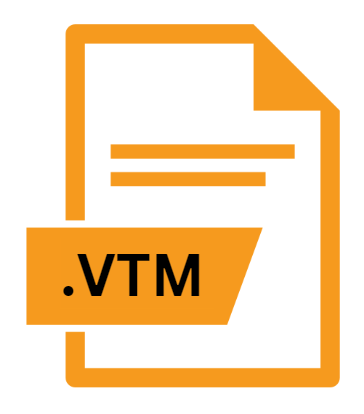.VTM File Extension

Visual Tool Markup Language Document
| Developer | Adobe Systems |
| Popularity | |
| Category | Developer Files |
| Format | .VTM |
| Cross Platform | Update Soon |
What is an VTM file?
.VTM file extension stands out, denoting files associated with Visual Tool Markup Language (VTML), a format designed for creating interactive visual content.
These files encapsulate data that define the structure, behavior, and appearance of visual tools, making them essential components in the development of various software applications.
More Information.
Visual Tool Markup Language emerged as a solution to the complexities associated with GUI development.
Conceived as an XML-based language, VTML provided developers with a structured means of defining user interface elements, such as buttons, menus, dialogs, and more.
The primary objective was to streamline the design process, enhance code readability, and facilitate the customization of visual components across different platforms and frameworks.
Origin Of This File.
The genesis of the .VTM file extension can be traced back to the evolving landscape of software development and user interface design.
As the demand for dynamic and visually appealing applications surged, developers sought a standardized approach to define the visual elements within their programs.
This need led to the creation of Visual Tool Markup Language, a markup language specifically tailored for describing graphical user interface components and their properties.
File Structure Technical Specification.
.VTM file comprises structured data encoded in XML format. The file structure adheres to predefined schemas, specifying the hierarchy of elements and their corresponding attributes. These elements encompass a wide range of GUI components, including but not limited to:
- Windows: Representing the main application windows or dialog boxes.
- Controls: Such as buttons, text boxes, checkboxes, radio buttons, and dropdown lists.
- Layouts: Defining the arrangement and positioning of UI elements within the window.
- Events: Describing the behavior associated with user interactions, such as button clicks or menu selections.
The technical specifications of .VTM files dictate the rules governing their syntax, semantics, and usage.
Developers leverage these specifications to parse, manipulate, and render VTML documents within their applications.
Additionally, adherence to standards ensures interoperability and compatibility across different development environments and platforms.
How to Convert the File?
Converting .VTM files to other formats or vice versa may be necessary to accommodate interoperability requirements or integrate with third-party tools. Several methods exist for converting .VTM files, including:
- Manual Conversion: Developers can manually rewrite the content of .VTM files in the target format, adhering to the syntax and structure specifications of the desired format.
- Automated Conversion Tools: Specialized software tools or scripts may automate the conversion process, parsing .VTM files and generating equivalent representations in the target format.
- Integrated Development Environments (IDEs): Some IDEs provide built-in support for converting .VTM files to formats compatible with specific frameworks or platforms.
The choice of conversion method depends on factors such as the complexity of the .VTM files, the availability of conversion tools, and the desired output format.
Advantages And Disadvantages.
Advantages:
- Modularity: VTML promotes modular design by encapsulating UI components as reusable entities, fostering code reusability and maintainability.
- Platform Independence: Since .VTM files are based on XML, they can be parsed and interpreted across various operating systems and development frameworks.
- Ease of Customization: Developers can easily modify the appearance and behavior of visual tools by editing the corresponding VTML files, facilitating rapid prototyping and iterative design.
Disadvantages:
- Learning Curve: Mastery of VTML syntax and semantics may require a learning curve for developers unfamiliar with XML-based markup languages.
- Verbose Syntax: XML verbosity can sometimes result in verbose .VTM files, potentially impacting readability and file size.
- Limited Expressiveness: While VTML excels at describing static UI components, it may lack the expressiveness required for complex interactions or animations.
How to Open VTM?
Open In Windows
- Use a text editor or XML viewer to open and inspect .VTM files.
- Alternatively, utilize software development tools or IDEs that support VTML parsing and visualization.
Open In Linux
- Access .VTM files using text editors like Vim, Emacs, or graphical XML editors available on Linux distributions.
- Leverage development environments with XML parsing capabilities for handling .VTM files.
Open In MAC
- Employ text editors like TextEdit or third-party XML editors to view .VTM files.
- IDEs catering to macOS development may offer native support for working with .VTM files.













